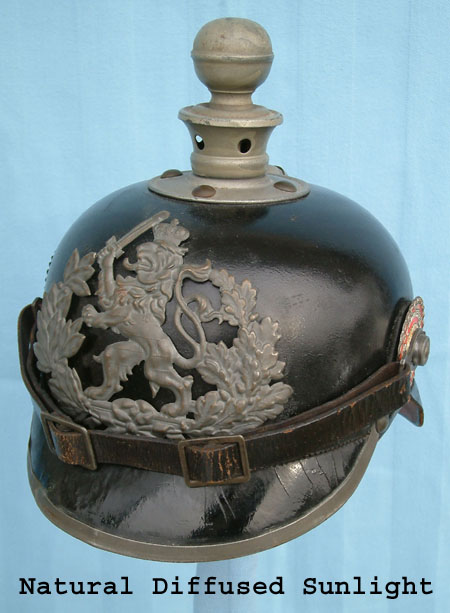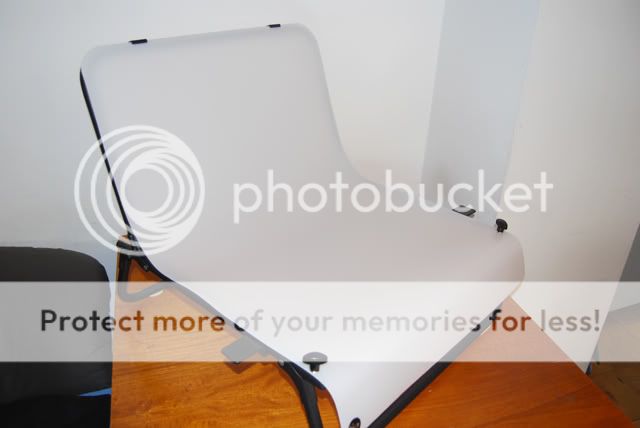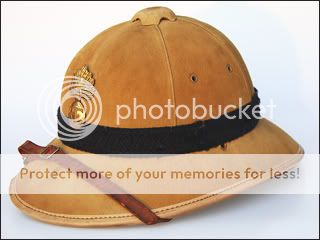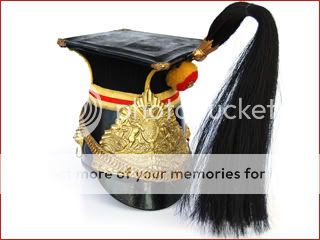I have received many compliments on my photography which is very much appreciated, but Chas and R1 are of a similar quality, and Brain's last photos were quite good I noticed. But we all use different methods.
So, I'll illustrate here how I take my photos. Here are three photos of the same helmet, a lovely little Model 1895 Württemberg Train Abteilung 13 Mannschaften Reserve Pickelhaube. (Did anyone think I would use an officer helmet?)
Beyond adding text and re-sizing the photos, I did absolutely no alteration to the photos.
First, below, is what is commonly seen; a helmet taken inside with a flash. You can obtain better quality than this, but the problems are clear. Inadequate and poorly distributed lighting, shadow, glare from the flash,
and fine details "blown away" by the flash.
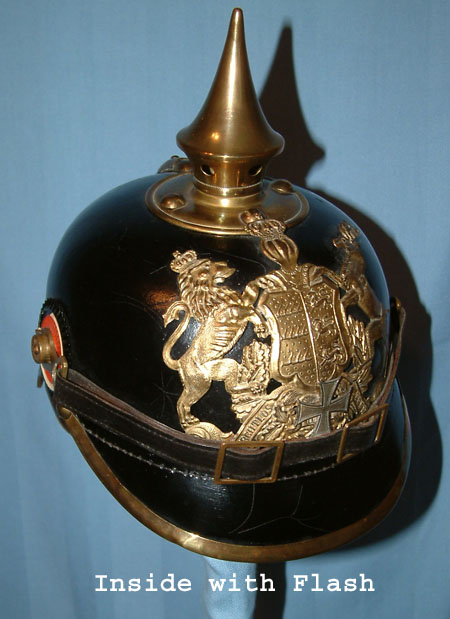
Now I set up my "studio" outside which is a blue bed cover that you will see in all the photos on Kaiser's Bunker, cleverly clipped to the siding of my house on the deck outside. The helmet is suspended about 30 cm (1 foot) from the wall on a stand.
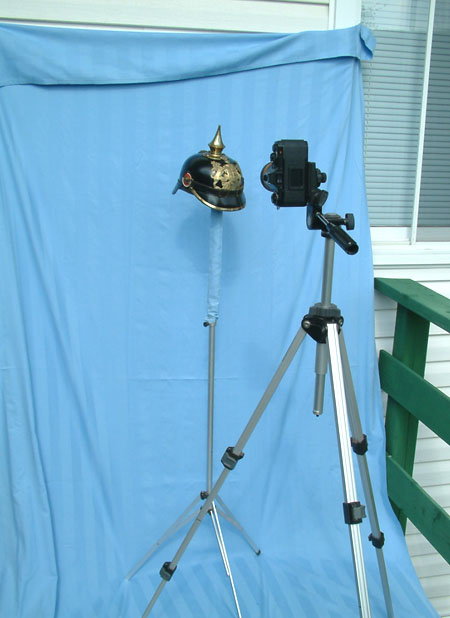
The example below is taken outside but in direct sunlight. Not as horrible as the inside photo, but still a lot of glare and shadow.
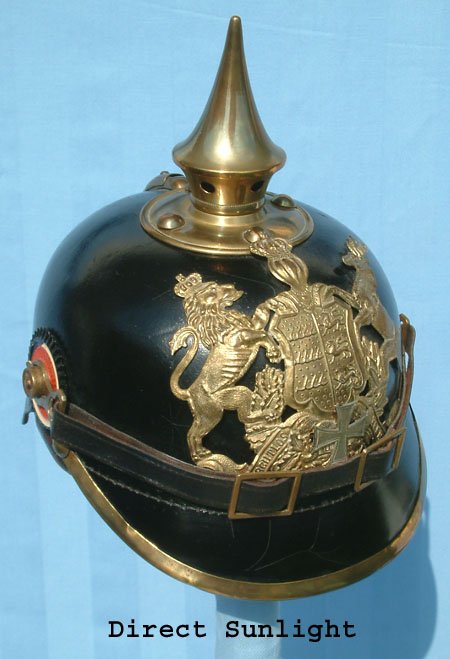
The photo below is what I aim for. A bright, yet overcast day. The sunlight is diffused and well distributed. There is no shadow and the details of the helmet are easy to see. I have been known to shovel a meter of snow off the deck in -25 to take a quick photo before freezing myself, the camera, and the helmet.
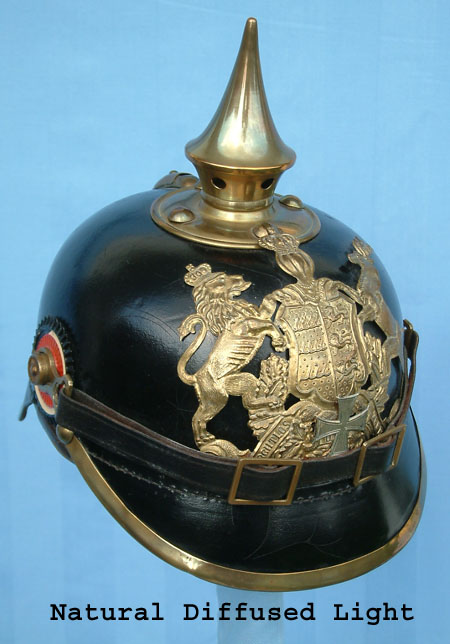
Yes its a pain in the butt to take them outside, especially when I am humping mannequins up two flights of stars and outside to get a tunic shot, but the quality speaks for itself.
Now over to Chas and his tent results. Hopefully R1 will chip in here as well with his suggestions and a few examples.
So, I'll illustrate here how I take my photos. Here are three photos of the same helmet, a lovely little Model 1895 Württemberg Train Abteilung 13 Mannschaften Reserve Pickelhaube. (Did anyone think I would use an officer helmet?)
Beyond adding text and re-sizing the photos, I did absolutely no alteration to the photos.
First, below, is what is commonly seen; a helmet taken inside with a flash. You can obtain better quality than this, but the problems are clear. Inadequate and poorly distributed lighting, shadow, glare from the flash,
and fine details "blown away" by the flash.

Now I set up my "studio" outside which is a blue bed cover that you will see in all the photos on Kaiser's Bunker, cleverly clipped to the siding of my house on the deck outside. The helmet is suspended about 30 cm (1 foot) from the wall on a stand.

The example below is taken outside but in direct sunlight. Not as horrible as the inside photo, but still a lot of glare and shadow.

The photo below is what I aim for. A bright, yet overcast day. The sunlight is diffused and well distributed. There is no shadow and the details of the helmet are easy to see. I have been known to shovel a meter of snow off the deck in -25 to take a quick photo before freezing myself, the camera, and the helmet.

Yes its a pain in the butt to take them outside, especially when I am humping mannequins up two flights of stars and outside to get a tunic shot, but the quality speaks for itself.
Now over to Chas and his tent results. Hopefully R1 will chip in here as well with his suggestions and a few examples.










